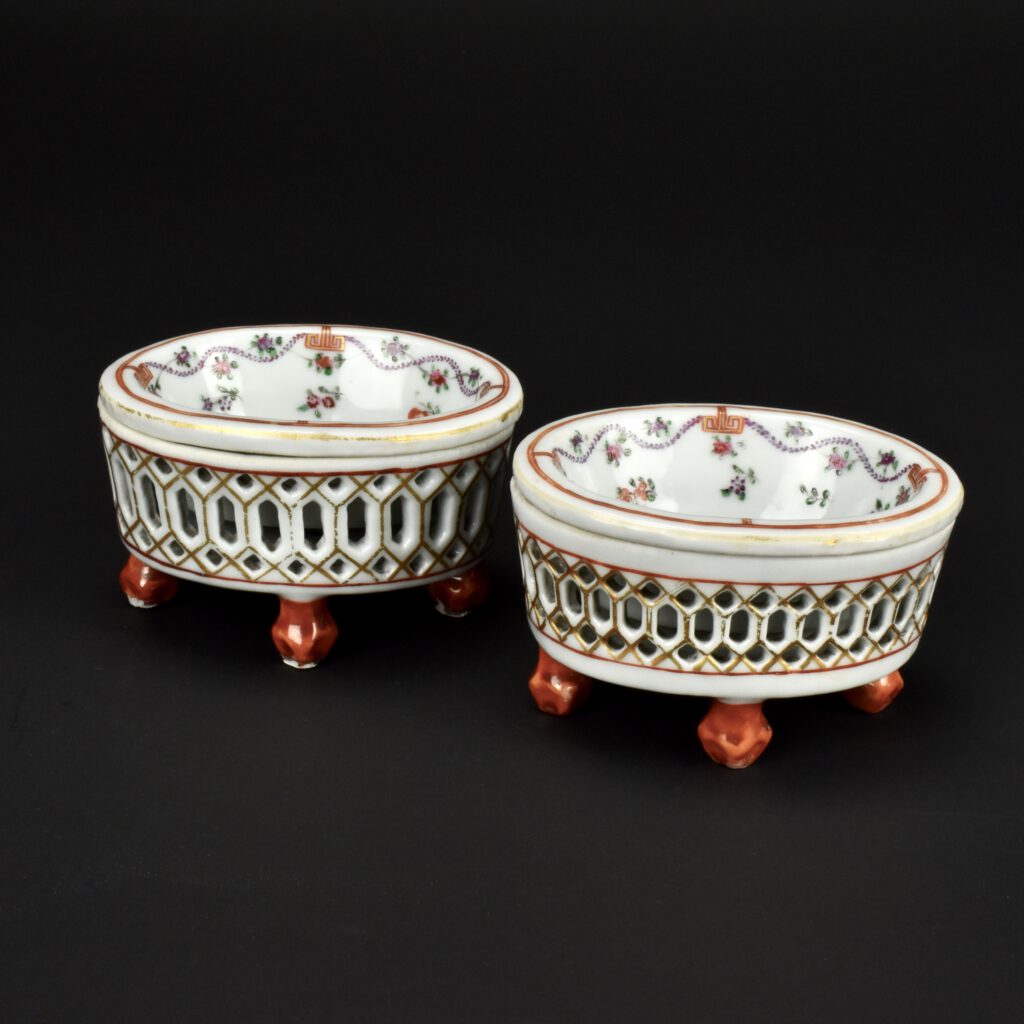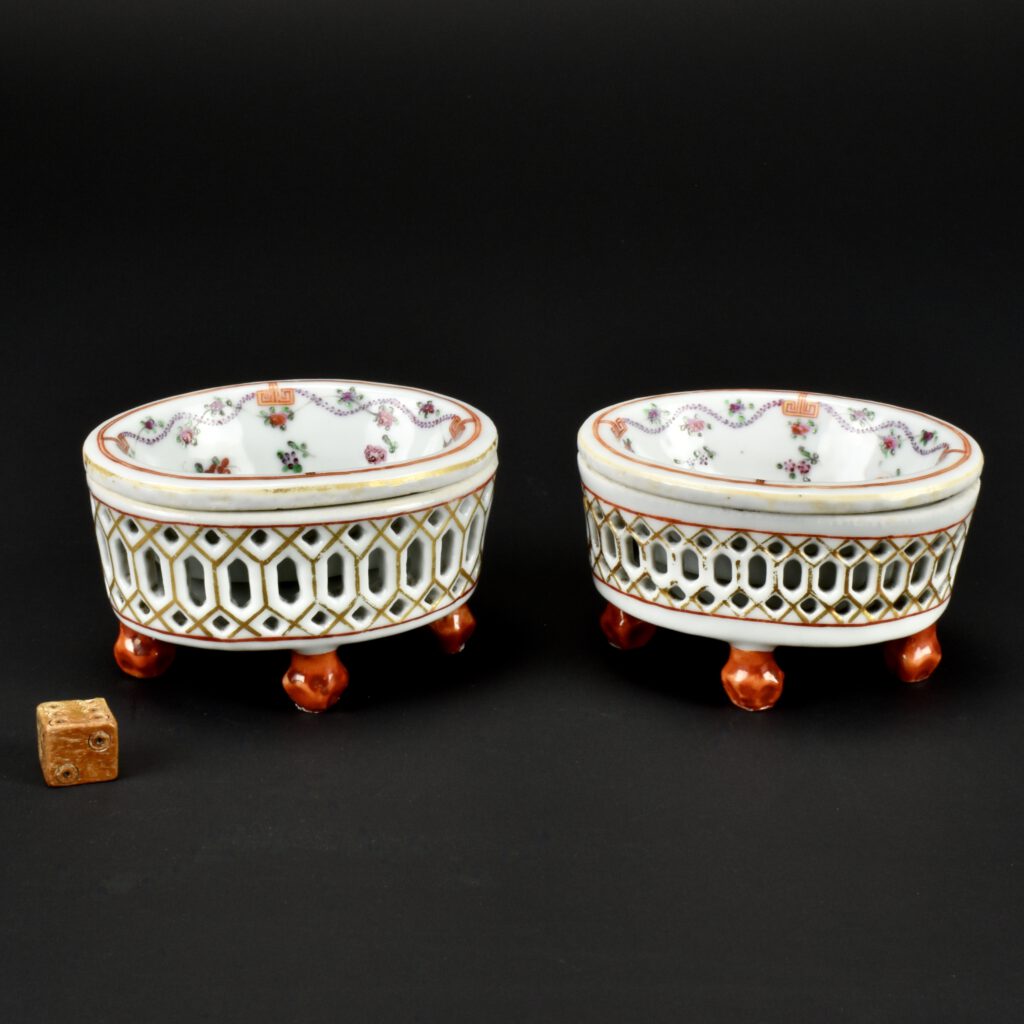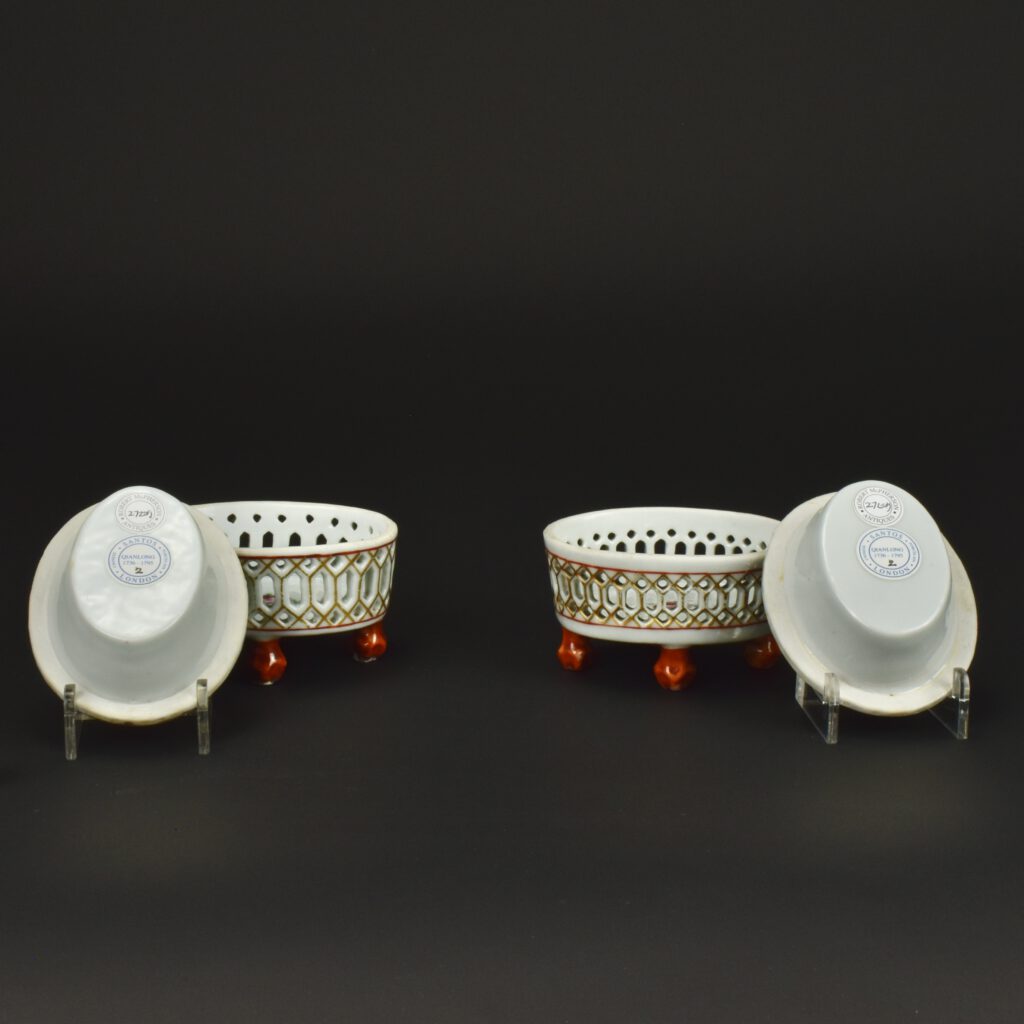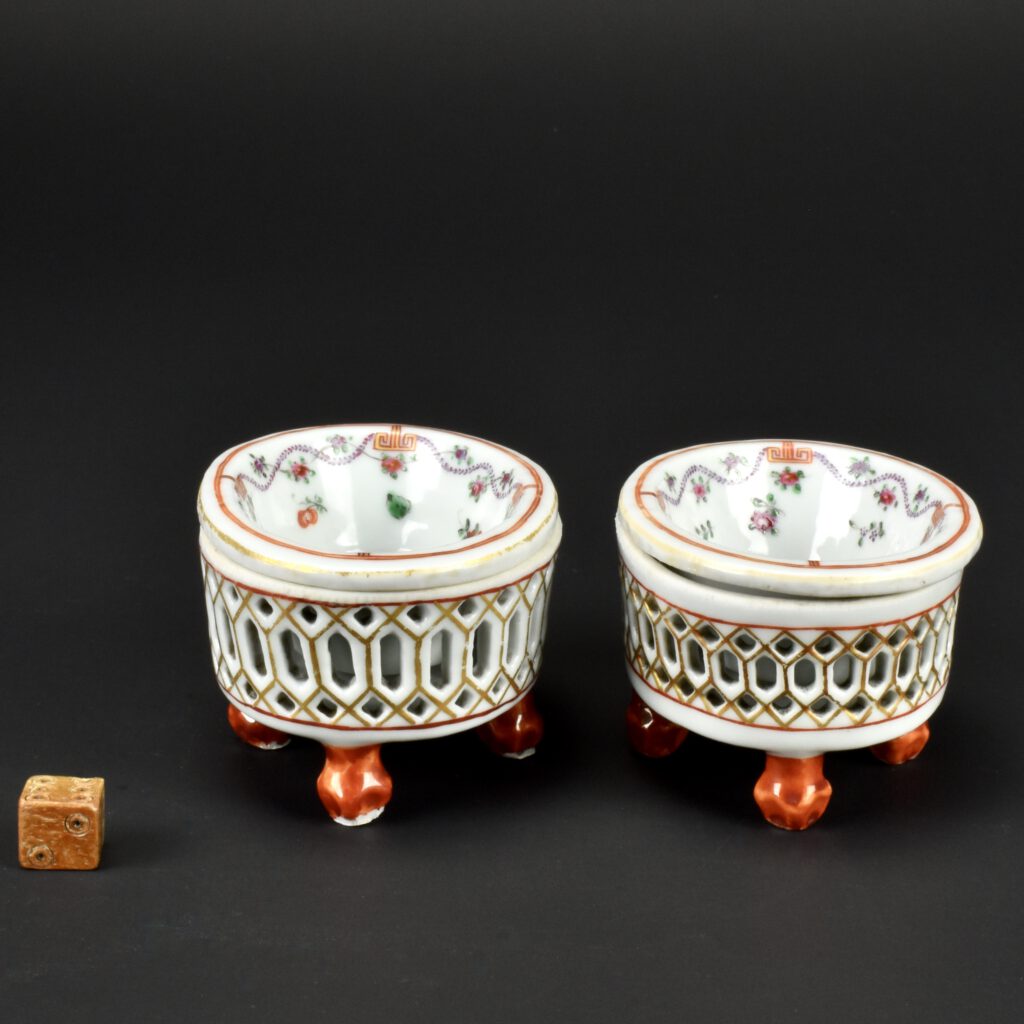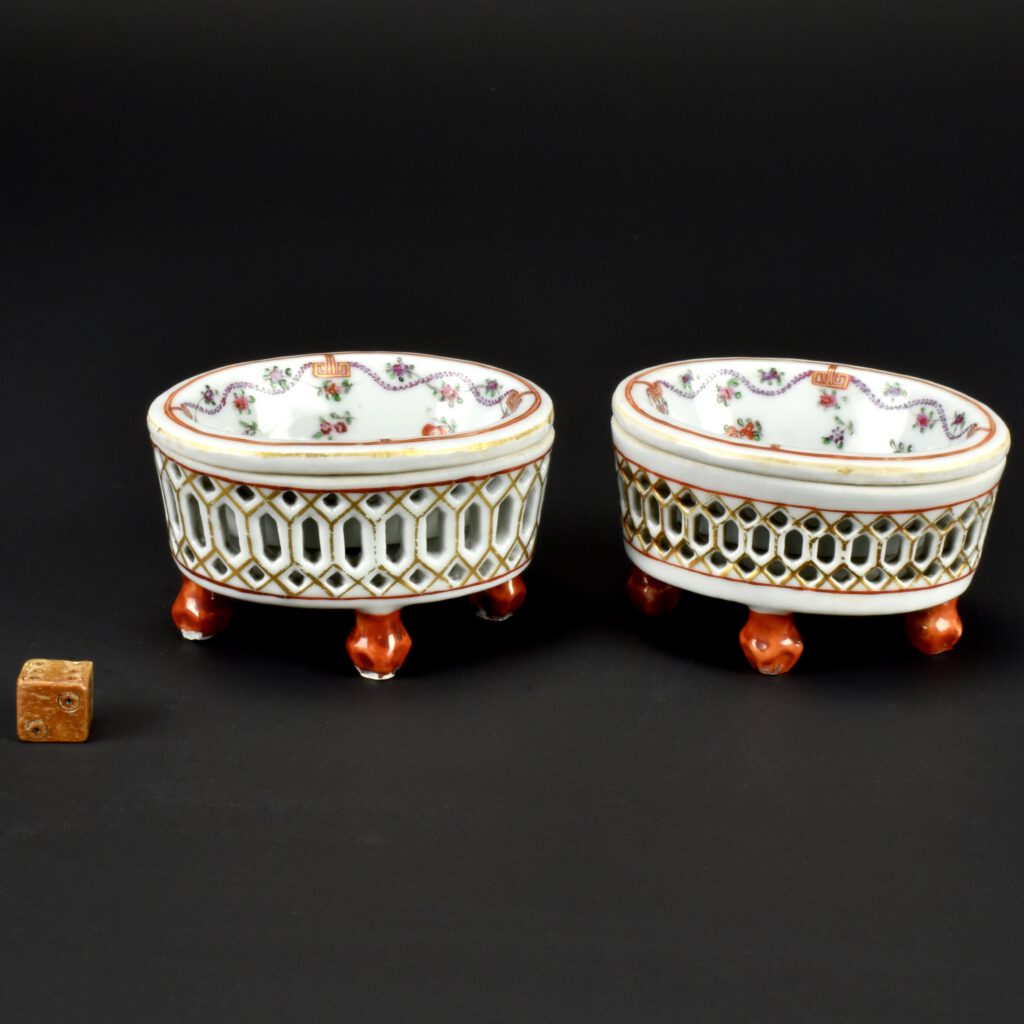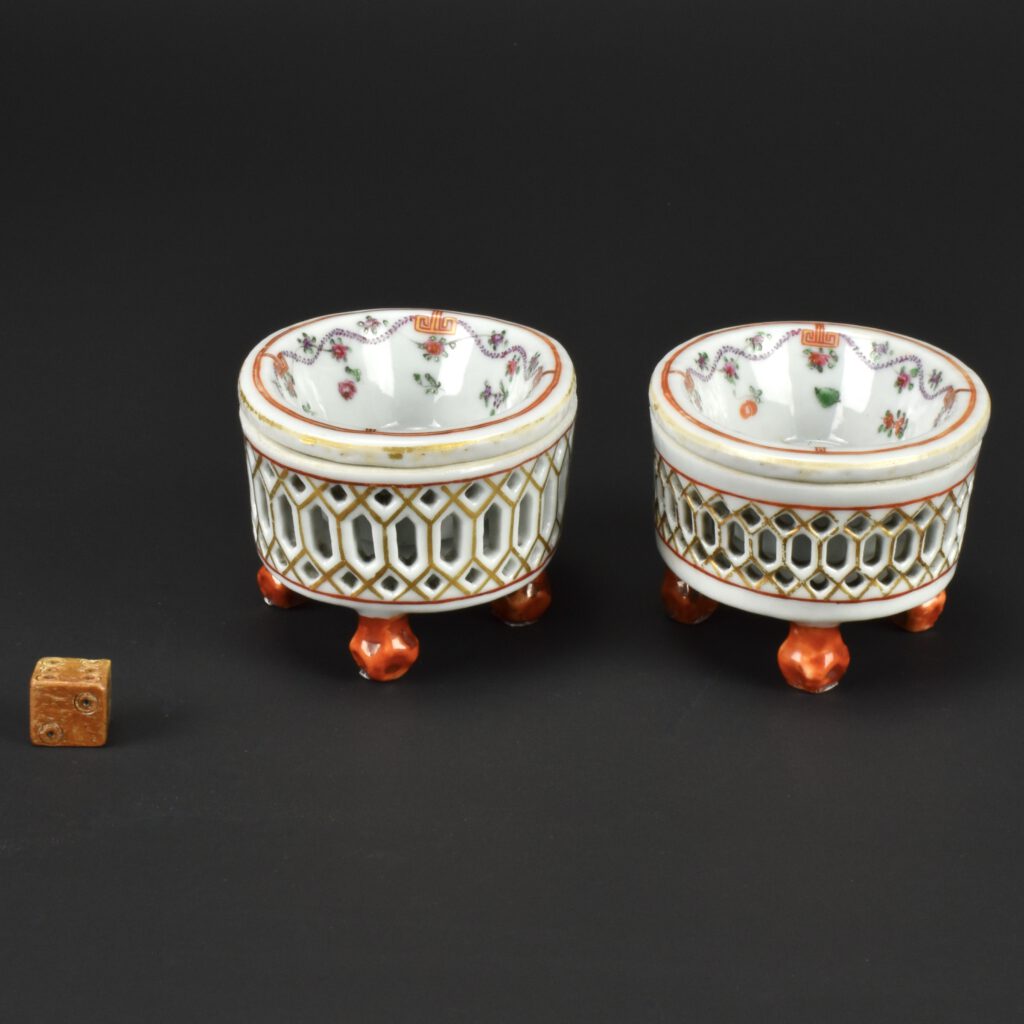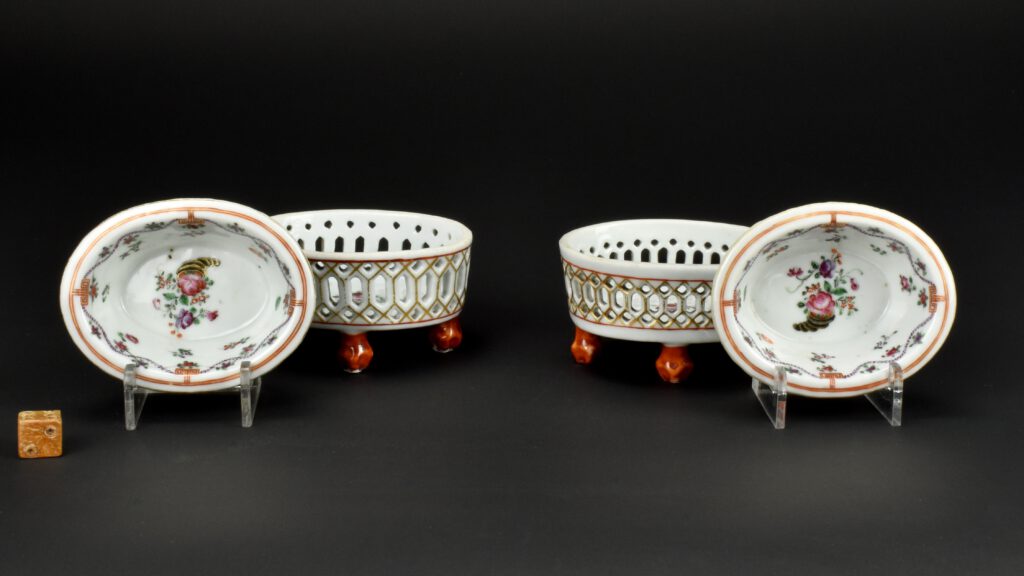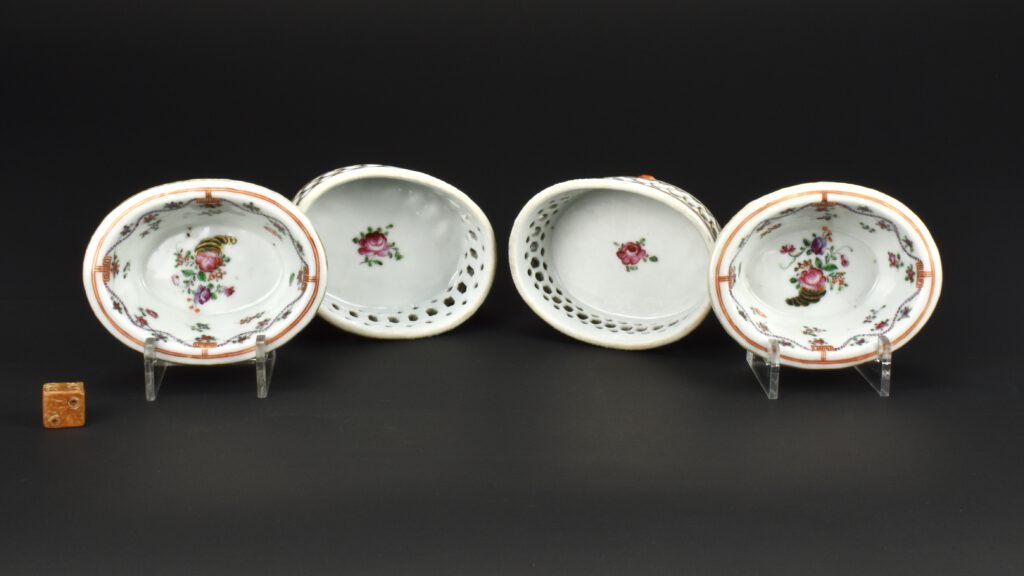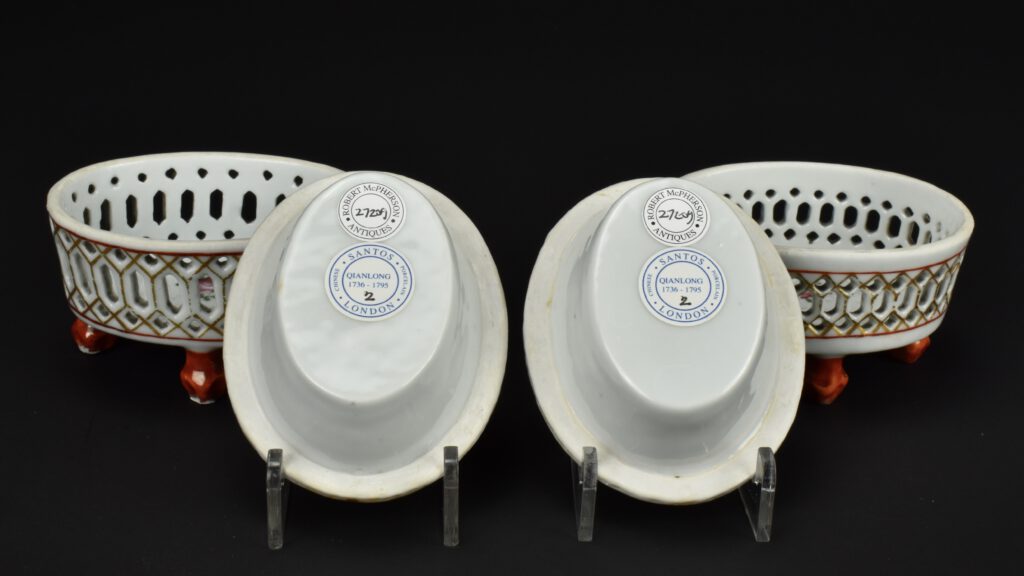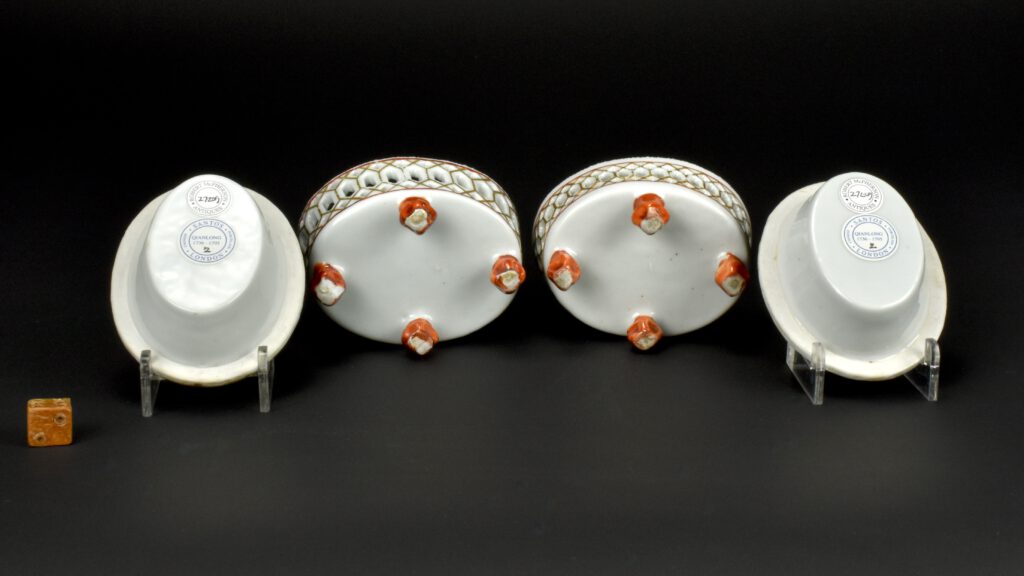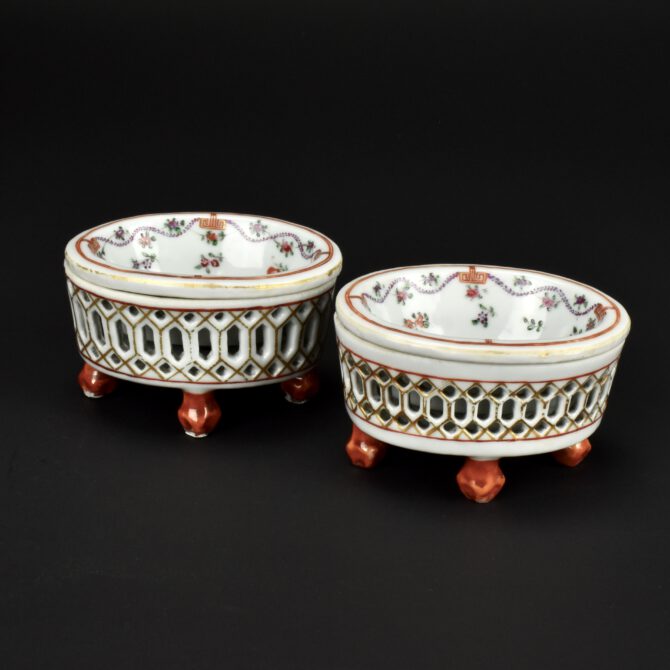
A Pair of 18th Century Chinese Export Porcelain Salts with Liners
A Pair of 18th Century Chinese Export Porcelain Salt Cellar with Liners, Qianlong Period c.1765-1785. This pair of oval salts are in the style of European porcelain of the period. The basket-work effect of the pierced sides was called Linglong in Chinese. However, this basket-work looks is far more in keeping with 18th century European porcelain than Chinese porcelain made for the Chinese. The Famille Rose decoration is also far more European than Chinese in style. The original form would have been European silver, this is form is natural to silver but requires a lot of extra work by a potter to achieve this shape. The liners are separate, this reflects the fact that silver tarnishes and corrodes when exposed to salt. The silver originals needed another material, such as glass, which to carry the salt separately on top of a silver base. See below for two English silver salt cellars with ‘Bristol’ blue glass liners (from Bukowskis Auction).
See Below For More Photographs and Information.
SOLD
- Condition
- In excellent condition, very minor rubbing to the gilding.
- Size
- Width 8 cm (3 1/4 inches). Depth 5 cm (2 inches)
- Provenance
- Santos, London.
- Stock number
- 27209
- References
- Robert McPherson Antiques - A Blue and White Chinese Porcelain Salt Cellar. Sold Archive - 23756. A pair of 18th Century sterling silver salt cellars, mark of Edward Lowe and Francis Stamp, London 1769 and 1780s. See lower down on this page.
Information
Linglong / Reticulated Porcelain :
The present piece is an example of what can be referred to as `reticulated` porcelain, reticulated meaning having the form or appearance of a net, it was used as early the beginning of the 18th Century by the famous Père Francois Xavier d`Entrecolles (1664-1741) to describe this type of work on porcelain. Another popular term for this type of pierced or cut decoration is `Devils Work` or Guigong. However the Chinese term Linglong is gradually replacing the previous terms, helped by the publication of Jorge Welsh`s book `Linglong` (Jorge Welsh,London,2004.ISBN 972-99045-2-9). There does not seem to be any difference in the use of terms between the free standing pierced porcelain or that supported by an inner wall, nor a distinction made between the most refined work or the type with larger cut-out sections of porcelain.
Robert McPherson Antiques - Sold Archive
A Blue and White Chinese Porcelain Salt Cellar. Sold Archive - 23756
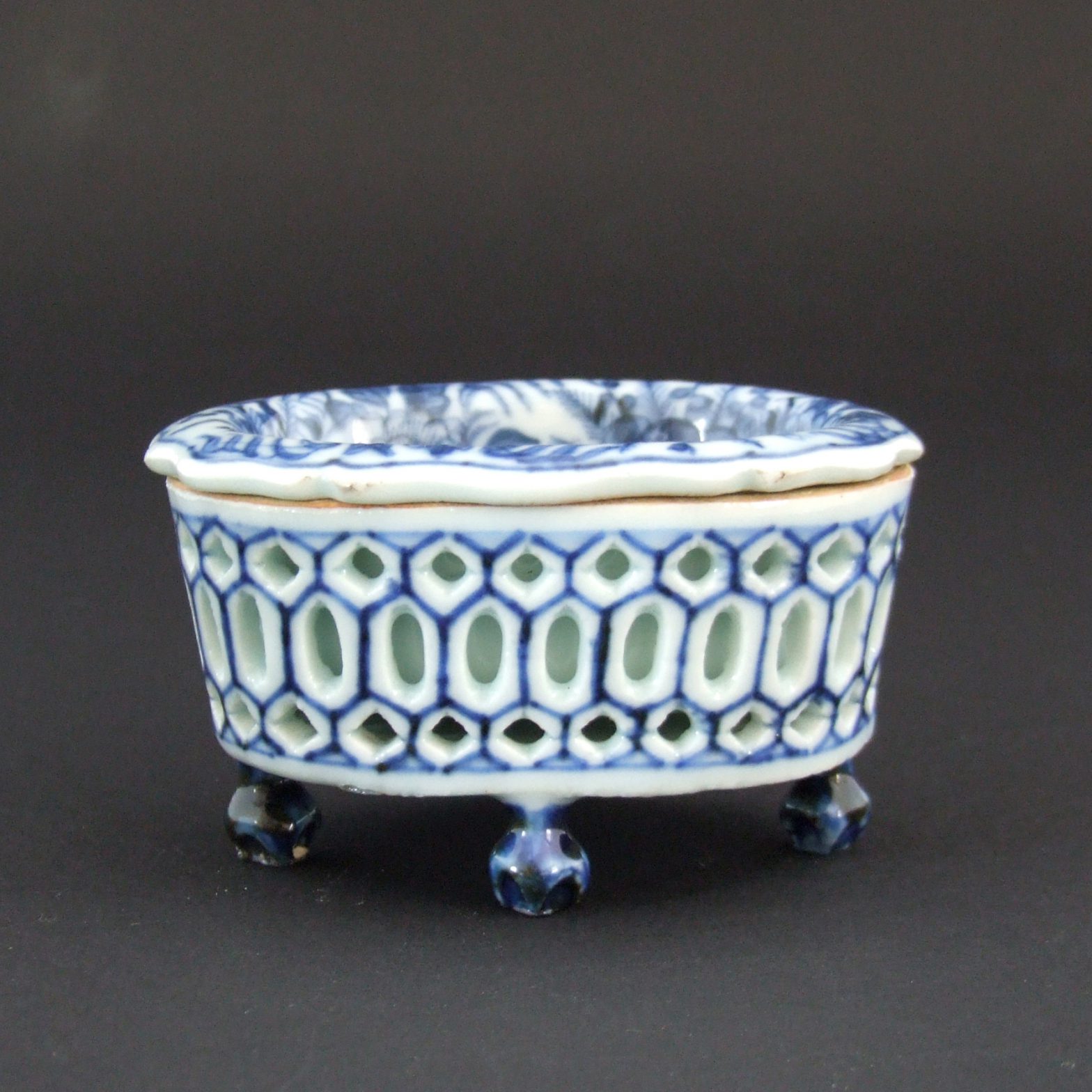
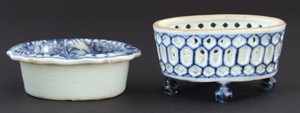
Bukowskis Auction
Arsenalsgatan 2
Box 1754, 111 87 Stockholm, Sweden.
E-mail info@bukowskis.com

Famille Rose Porcelain
China's ceramics industry has for thousands of years be connected to events in the world outside it's own borders. Importing materials, assimilating foreign ideas, foreign tastes and inventions, as well as making ceramics for cultures completely foreign to it's own tastes and ethos China has always adapted it's ceramics industry to fit the needs of it clients who ever they may be. It was during the Qing dynasty, especially from the late 17th century, that the Chinese became especially interested in Western technology and science. Famille Rose enamels were developed as a consequence of this interaction, the Chinese referred to these enamel colours as foreign colours from as early as 1734 but there origin can be traced back to the 1720`s if not earlier. The impetus for the development of this new palette was the direct involvement emperor Kangxi (1662-1722) who desired to improve expertise in the manufacture of all crafts, especially in relation to learning about technology from abroad. Famille Rose enamels were different to the earlier Famille Verte enamels in a number of ways, the most obvious being the colours used, but the enamels themselves were different in that the translucent colours of the earlier palette were making way to thicker impasto opaque enamels of Famille Rose. The rose colour that gives its name to this colour scheme is created from colloidal gold (a suspension or colloid of sub-micrometre-sized particles of gold in a fluid). This ruby red colour was augmented by two other newly introduced coloured enamels, an opaque white which was made from fine crystals of lead arsenate, the other new colouring agent was lead stannate used for the opaque yellow. These colours, while new to China, were certainly not new to Europe but the effect of them on porcelain certainly was new. Famille Rose didn't entirely replace Famille Verte as such but it certainly became far more popular. Famille Rose enamel was used in the Imperial workshops to paint some of the most complex intricate designs ever carried out on Chinese porcelain, it was also used for Chinese taste or domestic market porcelain, but was also used to decorate a vast array of Chinese export porcelain of all shapes and sizes.
